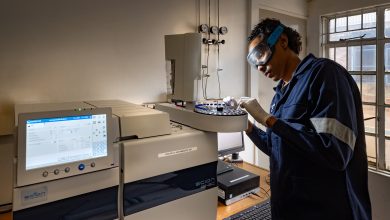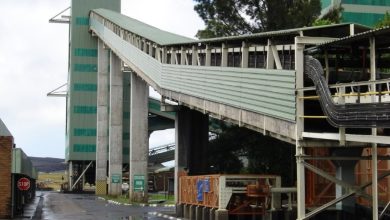
Mining companies should not view EMESRT Level 9 Control as a grudge investment, but as a potential gain. Currently, there are some pending grey areas. However, mining companies have to be proactive by collaborating with OEMs to find suitable intervention control solutions commensurate with the risks in their respective trackless mobile machinery (TMMs).
In the South African mining environment, the sub-regulation of Regulation 8.10 of the Mine Health and Safety Act (MHSA) on diesel-powered trackless mobile machinery (TMMs) is transforming the management of collision avoidance systems (CAS). The regulation obligates mining companies to implement the industry standard Moving Equipment Safety Round Table (EMESRT) – Level 9 (Intervention Controls). Through EMESRT, the International Council on Mining and Minerals aims to eliminate all fatalities from vehicle interactions in mining by 2025.
Typically, EMESRT) Level 9 stipulates that TMM must incorporate automated machine controls that prevent unsafe vehicle-to-vehicle and vehicle-to-person interactions. This is in the event the operator has failed to implement the prior Level 7 (operator awareness) alarm and Level 8 (advisory control) alerts in a timely manner. In the end, this reduces the risk of fatalities.
Grey areas
South Africa is one of the latest countries to ratify EMESRT officially, relatively speaking. So, as you would have thought, there are several grey areas to address. The main ones are the timelines applicable to every mine to adopt and implement, and the huge financial outlay entailed to replace the old fleet with EMESRT-compliant.
So what’s next?
The buck stops with mining companies
Surely, mining companies do not have the luxury of waiting for matters to be clarified before they act on Level 9 Control regulations. The buck stops with them as their operations are inherently risk-prone.
Where there is mining activity, there is always the risk of TMM accidents lurking, ready to pounce. While there may be concerns with the sub-regulation of Regulation 8.10, it is noteworthy that the Mine Health and Safety Act (MHSA) compels mining companies to protect their employees from hazards through the adoption of reliable mitigation measures. This implies exploring every available avenue.
Highlighting the prevalence of risk is not fear-mongering. Statistics back this up.
In 2022, Global Data, a data and analytics company, conducted a survey whose findings reflected the overlooked extent of the risk that abounds. The results showed that the failure of vehicle interaction controls contributes to 30% to 40% of mining industry deaths globally. Worryingly, half of these involve pedestrians in underground mines.
New chapter
In an interview with Mining Business Africa published in the March/April 2024 edition, two experts in mining law offered their views on the implication of EMESRT on compliance. Pieter Colyn, a Mine and Occupational Health and Safety Executive and Head of Department, and Warren Hendricks, a Mine and Occupational Health and Safety Executive at ENS Africa, a firm involved in African mining projects. They argued that mining companies should regard the regulations as a new chapter in their drive to mitigate the risk of vehicle collisions, rather than a constraint.
“Employers in South Africa, working with OEMs, are the forerunners in the investigation, design, installation, testing, certification, and utilisation of such “means” (intervention controls) in various mining environments. This brings about opportunities for OEMs to develop new and innovative systems for application at a mine, locally and internationally,” they stated.
The two highlighted opportunities for OEMs and mining companies (employers) to enter partnerships in testing systems in “real world” mining environments, which vary from operation to operation. In due course, the collaborative arrangements between OEMs and employers would help implement safe and healthy parameters for such systems to operate in such environments.
In this publication’s 2024 Mining Indaba Edition, Probe Integrated Mining Technologies (IMT) CEO, Gert Roselt, concurred with the two legal dons. Going further, he suggested implementing systems that allow for the interoperability of capabilities. “Implementing reliable integrated systems that can comply with Level 9 requires long-term commitment and solid investment in sophisticated CAS systems that provide high integrity object detection, operator warning, and automatic intervention, when necessary, to prevent an accident,” he spelled out.
There are enormous gains from implementing technologies that enable EMESRT compliance; a case in point is in the statistics from South Africa’s mining sector. The Minerals Council attributed the reduction of fatalities to only one TTM collision-related death recorded in 2022 to the increase in the adoption of advanced proximity detection and CAS.
Turning aims to reality
Through EMESRT, the International Council on Mining and Minerals aims to eliminate all fatalities from vehicle interactions in mining by 2025. The onus is on mining companies at the core face of operations to turn this into reality by embracing the last line of defence in vehicle-to-vehicle and vehicle-to-pedestrian interactions.






